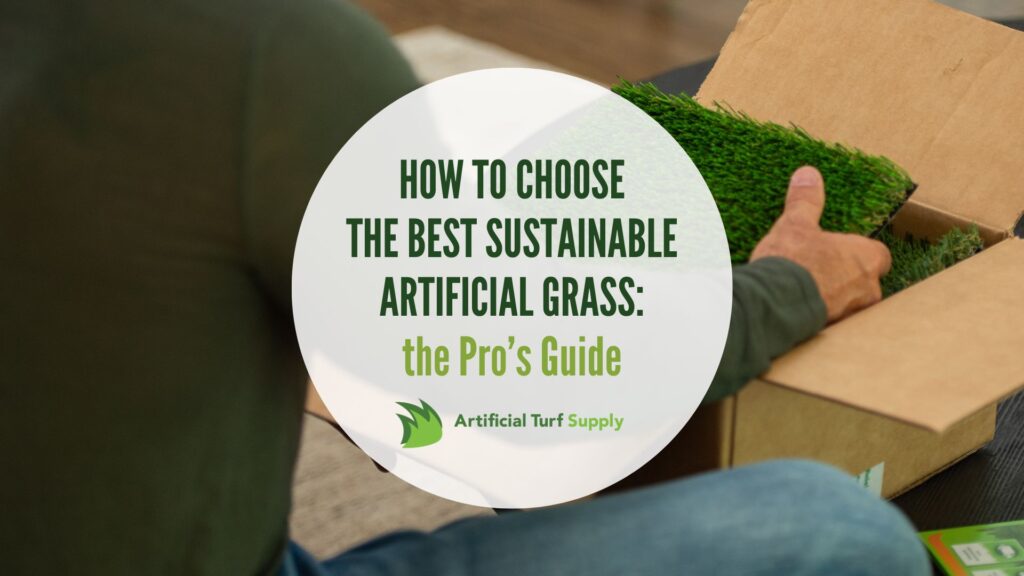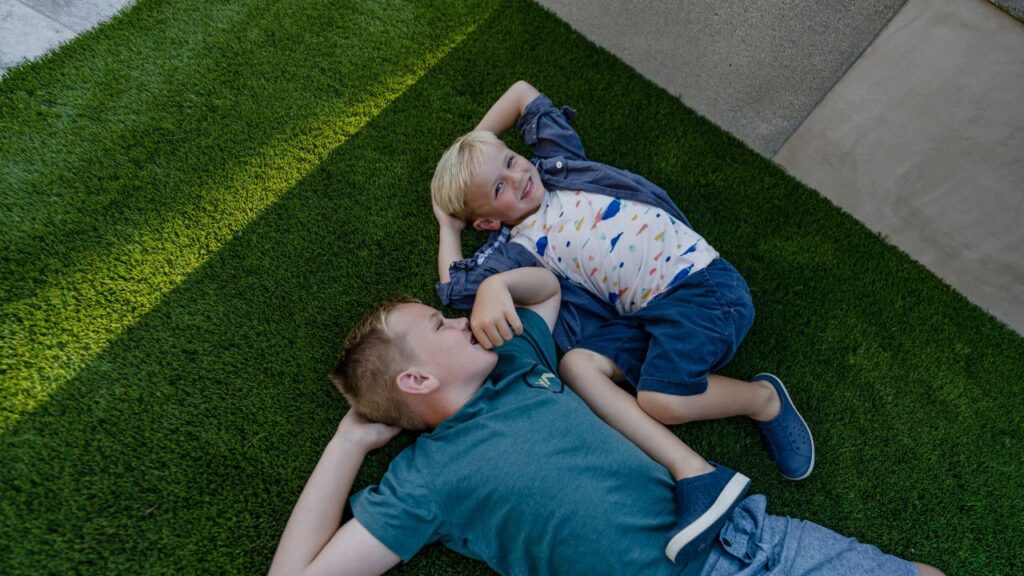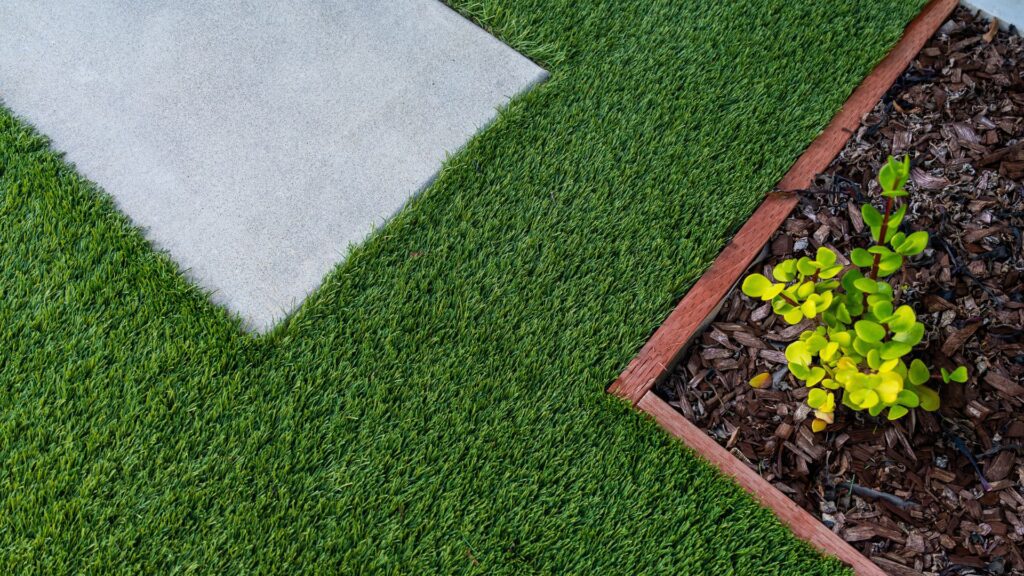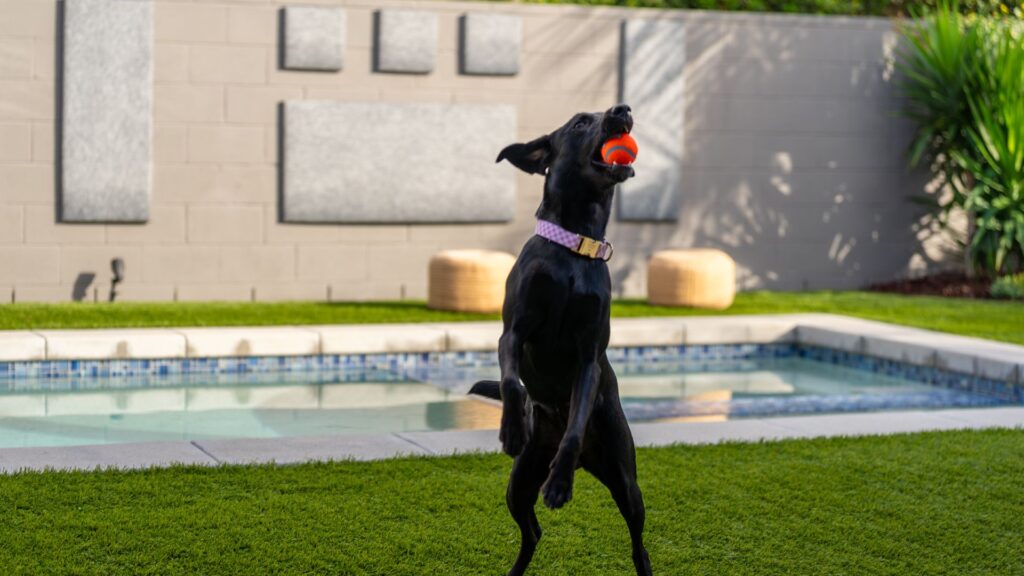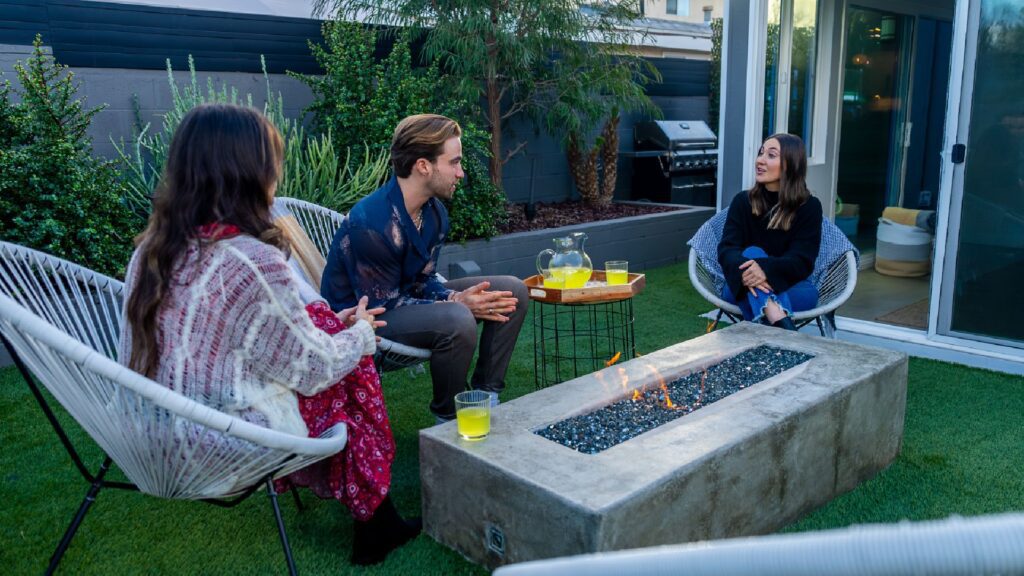The next time you’re down at your local project store, say something like, “I’m thinking about installing sustainable artificial grass in my lawn.” You’ll learn REAL quickly where everyone stands on this issue.
But here’s the thing, it doesn’t matter if you’re on TEAM NATURAL FOREVER or TEAM FAKE GRASS IS GREAT. No one can argue that artificial grass has some serious sustainability chops. So the question becomes: how do you choose the best sustainable artificial grass? Well, once you know all about a synthetic turf’s water impact, materials, and eco-impact, you’re well on your way to making the right synthetic turf choice for you lawn or outdoor space.
So, that’s what we’re all about today. Join me and your fellow sustainability students as we learn how to become eco-friendly fake grass pros.
A Quick Primer to Sustainable Artificial Grass
-
- Sustainable artificial grass can save up to 70% on water usage compared to natural lawns
- Look for products made from recycled materials and free from harmful chemicals
- High-quality options can last up to 20 years, reducing the need for frequent replacements
- Consider factors like durability, drainage, and UV resistance when making your choice
- Proper installation and maintenance are crucial for longevity and performance
The Green Revolution: Benefits of Sustainable Artificial Grass
It’s important to start by talking about why sustainable artificial grass is such a big deal in the landscaping world right now. Well, you don’t even have to master Google-Fu for dire water availability headlines. But maybe those headlines aren’t motivating for you. I get it. So if that’s you, instead just imagine your lush, green lawn can stay perfect year-round without guzzling water, spiking up your water bill, or demanding constant upkeep. Sounds pretty sweet, right?
Well, welcome to the sweet lawn life, my friend. Sustainable artificial grass offers a ton of great benefits that’ll make both your wallet and Mother Nature smile:
-
- Water Conservation: One of the biggest perks is the massive reduction in water usage. We’re talking up to 70% less water compared to natural grass. That’s not just good for the environment; it’s great for your water bill too!
- Low Maintenance: Say goodbye to mowing, weeding, and fertilizing. With sustainable artificial grass, your weekends are yours again. No more battling with a stubborn lawnmower or getting grass stains on your favorite jeans.
- Durability: High-quality sustainable artificial grass can last up to 20 years. That’s two decades of perfect green without the hassle of reseeding or dealing with brown patches.
- Eco-Friendly Materials: Many sustainable options are made from recycled materials. It’s like giving plastic bottles a second life as your beautiful lawn!
- Chemical-Free: No need for pesticides or herbicides, making it safer for kids, pets, and local wildlife.
- Consistent Appearance: Come rain or shine, drought or downpour, your lawn will look picture-perfect all year round.
Okay, okay. I’ll stop with the sales pitch. Instead, let’s learn all those little artificial grass sustainability deets you need to know to make the best choice.
Identifying Sustainability Factors: Not All Grass is Created Equal
Repeat after me: “Sustainable artificial grass is not just about looking green – it’s about being green.” We’re talking about combining curb appeal and eco-impact. So here are the things you need to consider.
Materials Matter
Nowadays, there are a lot of artificial grass materials out there. But to keep it sustainable, you want to look for artificial grass made from recycled materials. Some top-notch options use recycled plastic bottles or rubber. Reducing waste while beautifying your backyard? Sign me up!
Chemical-Free is the Way to Be
Chemicals are everywhere these days. But you don’t want them at under your bare feet. Shop for products that are free from harmful chemicals and toxins. Your lawn should be a safe haven, not a chemical wasteland. That’s why one of Artificial Turf Supply’s best-selling turf options – called 50t – is non-toxic, pesticide-free, and chemical-free.
Durability Equals Sustainability
The longer your artificial grass lasts, the less waste you create. That’s some good math right there. Aim for products with a lifespan of 15-20 years, which might eliminate a number of cheaper options. But the reality is the longer your turf lasts, the more value you get out of that initial investment.
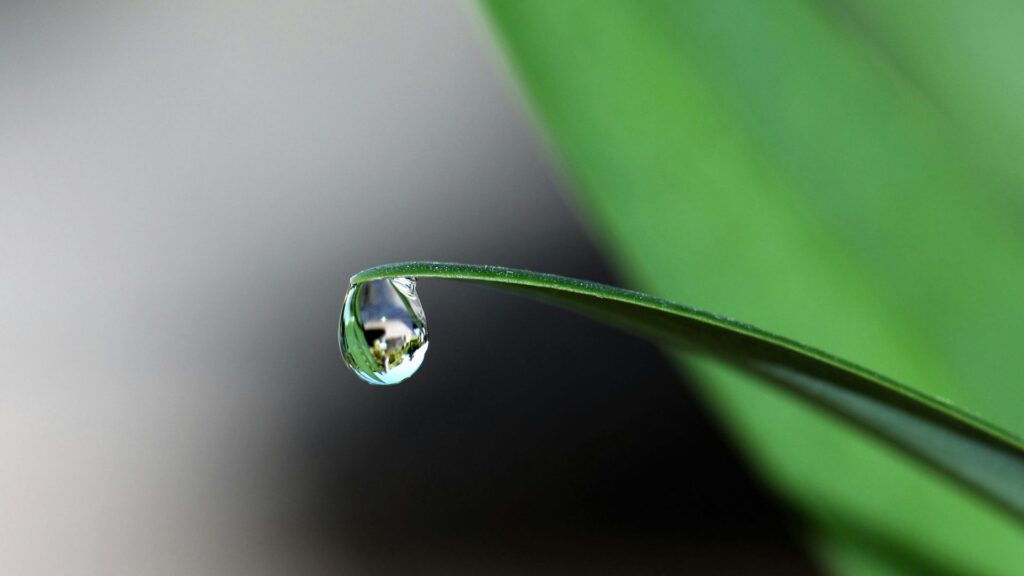
Water Efficiency
Good drainage is crucial. You want an artificial grass that allows water to flow through easily, preventing puddles and reducing runoff. That protects your synthetic turf from warping or developing bumps.
This is yet another one of those reasons I always, ALWAYS suggest my customers consider having professionals install their artificial grass. It takes experience and know-how to get drainage (and many other turf installation steps) done in an effective, long-lasting manner.
The Artificial Turf Supply team has decades of experience. Give them a call for help in choosing or installing your perfect sustainable artificial grass: 866) 677-9405
UV Resistance
Your turf is going to see a lot of sun exposure. And constant UV exposure is tough on almost anything. Look for UV-resistant options to prevent fading and degradation from sun exposure. Nobody wants a lawn that looks like it’s been through a bleach accident!
Types of Artificial Grass: A Bladed Buffet
Now, let’s dive into the different types of artificial grass. It’s like a salad bar for your yard, but instead of lettuce and tomatoes, we’re talking about different synthetic materials.
-
- Polyethylene (PE): This is generally the most common type of artificial grass. It’s soft, durable, and looks pretty darn natural.
- Polypropylene (PP): Here’s a great budget-friendly option. It’s less durable but can be a good choice for low-traffic areas. This is probably not nearly as good if you have kiddos or pets who like to run around outside.
- Nylon: The tough guy of artificial grass. It’s super durable but can feel a bit coarse.
- Polyethylene/Polypropylene Blend: A happy medium that combines the best of both worlds.
There’s more to each of these options (not to mention some other less-available options). So swing by our website for help choosing the right artificial grass for you.
And use our free quote tool to get a good understanding of your cost and budget.
Environmental Considerations: Mother Nature’s Checklist
Choosing the best sustainable artificial grass isn’t just knowing about the grass itself. You also need to think about how it’ll jive with your local environment.
-
- Climate: If you live in a hot area, look for heat-resistant options. Trust me, you don’t want a lawn that feels like a frying pan in summer!
- Sunlight: Consider UV-resistant grass if your yard gets a lot of sun. It’ll keep your lawn looking fresh, not faded.
- Rainfall: Good drainage is crucial, especially in rainy areas. You want a lawn, not a pond!
- Local Wildlife: Non-toxic options keep local critters safe. This both makes you feel good about your choice, but also supports your local ecology
Durability and Lifespan: The Marathon Runner of Lawns
Think of your sustainable artificial grass like a marathon runner … not a sprinter. Something that looks beautiful for two seasons really isn’t a good investment. So, make sure you ask your turf supplier about these factors.
-
- Fiber Strength: Strong fibers resist wear and tear.
- Backing Quality: A sturdy backing keeps everything in place.
- Proper Infill: The right infill supports the fibers and improves durability. Plus, look into eco-friendly options like EnviroFill.
Remember, a high-quality sustainable artificial grass can last up to 20 years. 20 years of not having to mow your lawn, you say? I’m in.
Drainage and Water Efficiency: Don’t Let Your Lawn Become a Swamp
Good drainage is crucial for sustainable artificial grass. It prevents water buildup, reduces runoff, and keeps your lawn looking fresh. Trust me, you want all of those things. So, look for:
-
- Perforated backing for easy water flow
- Proper base preparation during installation
- Adequate slope in your yard
A well-draining artificial lawn can help manage water more efficiently than natural grass, potentially saving up to 70% on water usage. That means artificial grass is a win for both your wallet and the environment!
Maintenance Requirements: Less Work, More Play
Okay, I’m not gonna lie. This is a huge motivator for me. Sustainable artificial grass is super low maintenance. But “low” doesn’t mean “no.” And since we’ve stressed the importance of protecting your artificial turf investment a few times, here are some maintenance guidelines you should follow:
-
- Regular Brushing: Keep it looking fresh with occasional brushing.
- Rinse When Needed: A quick spray can remove dust and debris.
- Address Spills Promptly: Clean up any spills to prevent staining.
- Annual Deep Clean: Give it a thorough cleaning once a year.
Compared to natural grass, you’ll save countless hours and resources. No more mowing, watering, or fertilizing! What are you going to do with that extra garage space?
Safety First: A Lawn You Can Trust
I’m sure we can all agree that safety should be among your top considerations for sustainable artificial grass, especially if you have kids or pets. So I can’t stress these things enough:
-
- Look for non-toxic materials
- Ensure proper shock absorption for play areas
- Consider antimicrobial options to prevent bacterial growth
- Ask about fire-resistant properties
Budget Considerations: Investing in Green
Let’s talk money. Sustainable artificial grass might seem pricey upfront. But it’s a long-term investment with some serious money-saving benefits.
-
- Reduced water bills
- No need for lawn care equipment
- Savings on fertilizers and pesticides
- Increased property value
As you shop around, prices will vary. But you can expect to invest anywhere from $8 to $20 per square foot for high-quality, sustainable artificial grass. Just keep in mind that you’re not just buying grass. You’re investing in a hassle-free, eco-friendly lawn that will stay beautiful for years to come.
Making the Final Choice: Putting It All Together
Choosing the best sustainable artificial grass comes down to balancing your specific needs with the product’s features. For my customers’ peace of mind, I came up with a handy checklist.
Sustainable Artificial Grass Shopping Checklist:
[ ] Made from recycled materials
[ ] Free from harmful chemicals
[ ] Durable with a long lifespan
[ ] Good drainage system
[ ] Suitable for your climate
[ ] Within your budget
[ ] Aesthetically pleasing
Don’t be afraid to ask for samples and feel the grass yourself. After all, you wouldn’t buy a car without a test drive, right? And you know I always get a sample bite if ice cream before getting a double-scoop.
Wrapping Up: Your Path to a Greener Tomorrow
Choosing the best sustainable artificial grass is like finding the perfect pair of jeans. It takes some effort, but finding the right one is so worth it. And this is not just about having a perfect lawn. It’s about making a choice that’s good for you and the planet.
So, whether you’re looking to save water, cut down on maintenance, or just have a consistently beautiful lawn, sustainable artificial grass is a great answer. Do your research, weigh your specific needs, and don’t be afraid to ask questions. The folks over here at Artificial Turf Supply are eager to answer them all: 866) 677-9405


